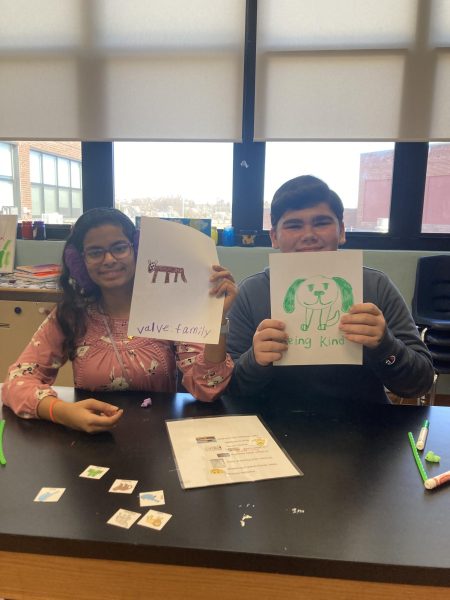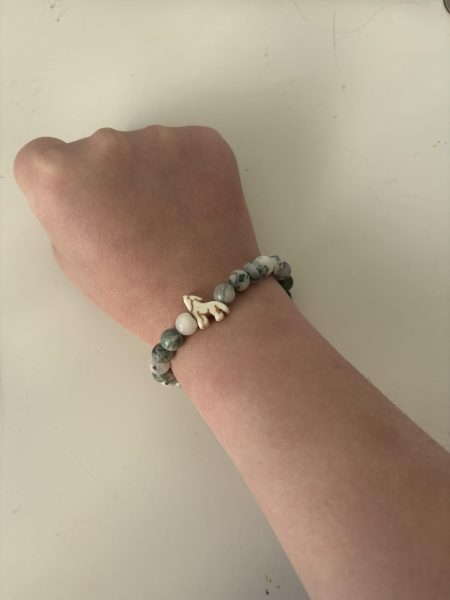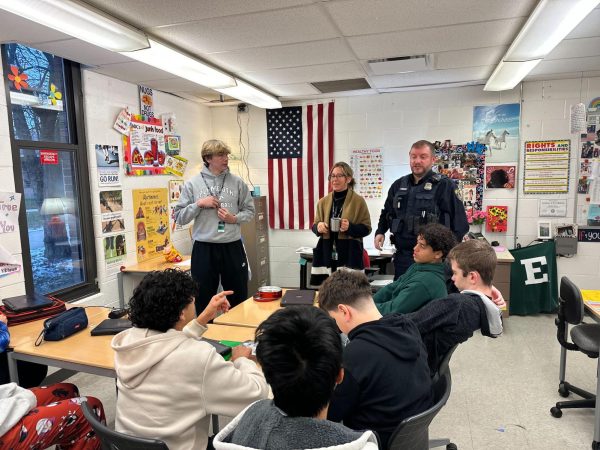The Secret of Cherry Hill Village (Part 2)
Editor’s note: This is a continuation from the article, “The Secret of Cherry Hill Village,” from the November print issue.
The renovations at Cherry Hill Village have continued for a second building that was originally part of the Ford factory. Ford built this building as a dormitory for the veterans, so that they had a living space until they could go off into society on their own. Jill Engle, the executive director of the Partnership of the Arts and the Humanities, explained how the dormitory would hold up to 18-20 men at a time. It had two floors with three bedrooms, two bathrooms, a kitchen and a living room. These veterans did have help around the residential house with a cook and an assistant. This building, along with the other Ford building, was opened in 1944 for only one and a half years.
The original goal for the renovations was to replicate an idea of having studio galleries and a boutique along a river. This idea was introduced by Thomas Yack, a previous board member of the partnership and a previous board member of Canton Township, where he wanted to replicate the Torpedo Factory located in Alexandria, Va. However the rent the artists wanted to pay would not be able to sustain the property as Engle described. Michigan State University students suggested using the dormitory as an art therapy building for local veterans, and Engle explained how they loved this idea.
The planning and renovations started off with getting a $20,000 grant from the Ford Motor company and a veterans group called Zero Day, volunteering at the site. “They refurbished the windows of the dormitory and redid the window sills. It was a paid apprenticeship project as well, so the veterans learned a new skill. The kitchen cabinets, the flooring and the doors are from the original building and it will all be refurbished. Also an elevator will be added in,” Engle said.
Engle added, “This is where the past meets presents, where we already had veterans being a part of redoing our buildings that was made for veterans originally.”
The last building, which was not part of the Ford Factory, is known as the warehouse, which has been vacant since 2005.
It is about 32,000 square feet and it “will provide a welcoming atmosphere for professional artists, aspiring artists, students, general public and shoppers for an assortment of art, including: clay, oils, watercolors, glass, tiles, fibers, wood, photography and more. It will be home to a wide variety of public artist studios, education spaces, a pottery workshop, visual arts gallery, black box performance area, art boutique and outdoor patios, sharing automotive history and Ford artifacts throughout” according to the Partnership website.
Engle said, “In 2013 and 2014, we did all of our planning, and then last year we demolished 12,000 square feet of warehouse and we separated these two building because they were connected. We also did some roof stabilization, so we did all of our construction preparation.”
P-CEP students have already been involved in this growing project, specifically the Art club. Over the summer, the six members, Kaylee Yang, Cindy Stuch, Christina Lai, Tanvi Sharma, Grace Ma and Annie Ning-Ranging, participated in a beautification project for the neighborhood by painting a mural across the 100 square foot front of the warehouse.
Cindy Stuch, the president of Art Club, explained how the mural project went. “This was like a month long project, for the mural and everybody had a lot of fun. And we probably, if possible might extend it when the weather gets warmer.”
Stuch said, “It’s exciting, and I think we are going to visit it once it opens up because like imagine taking an abandoned building and turning it into like something you can use and incorporating art into the community; it’s really cool.”
The Partnership has also planned for the grassland in between the Ford buildings and the warehouse to be used for outdoor art therapy.
An engineering company called the Mannequin Smith Group suggested that the Partnership should use the forest land. To maintain the peace and serenity of the area, the Partnership decided to make walking and bike trails along with few sculpture and floral gardens. These trails would connect to the trails already made in Washtenaw County.
With the Partnership’s main goal of encouraging cultural arts in the greater Canton community and touching borders with Washtenaw county, they were able to receive a 2017 Capital Improvement Program (CIP) grant from the Michigan Council for Arts & Cultural Affairs (MCACA).
Engle said, “We received $45,000 to utilize before Sept. 30, 2017. Out of the 113 CIP grant applicants, fewer than 20 organizations received as much as we did.”
According to the narrative of the program impact, “Canton residents’ affection and support for historical preservation and their support of local art events will provide the art community with the ability to extend an education venue.”
P-CEP student Kelsey Taylor is enthusiastic. Taylor said, “I don’t think the schools pushed the arts education enough because of the core curriculum. I don’t think the arts are being pushed, even though the arts are incredibly important because they encourage critical thinking and memorization and just creativity in general. Just walking around the Park, you have all these murals and most of those are made by the Arts and the Honors Humanities classes here. We need to have more of that kind of encouragement, and if we don’t it will just die out.”
Your donation will support the student journalists of Salem High School - MI. Your contribution will allow us to purchase equipment and cover our annual website hosting costs.






